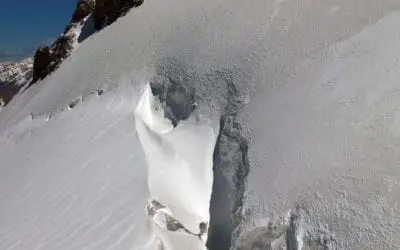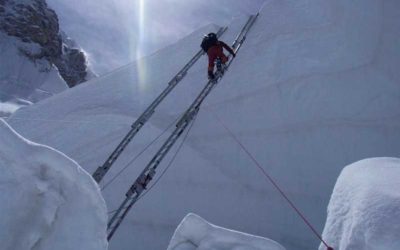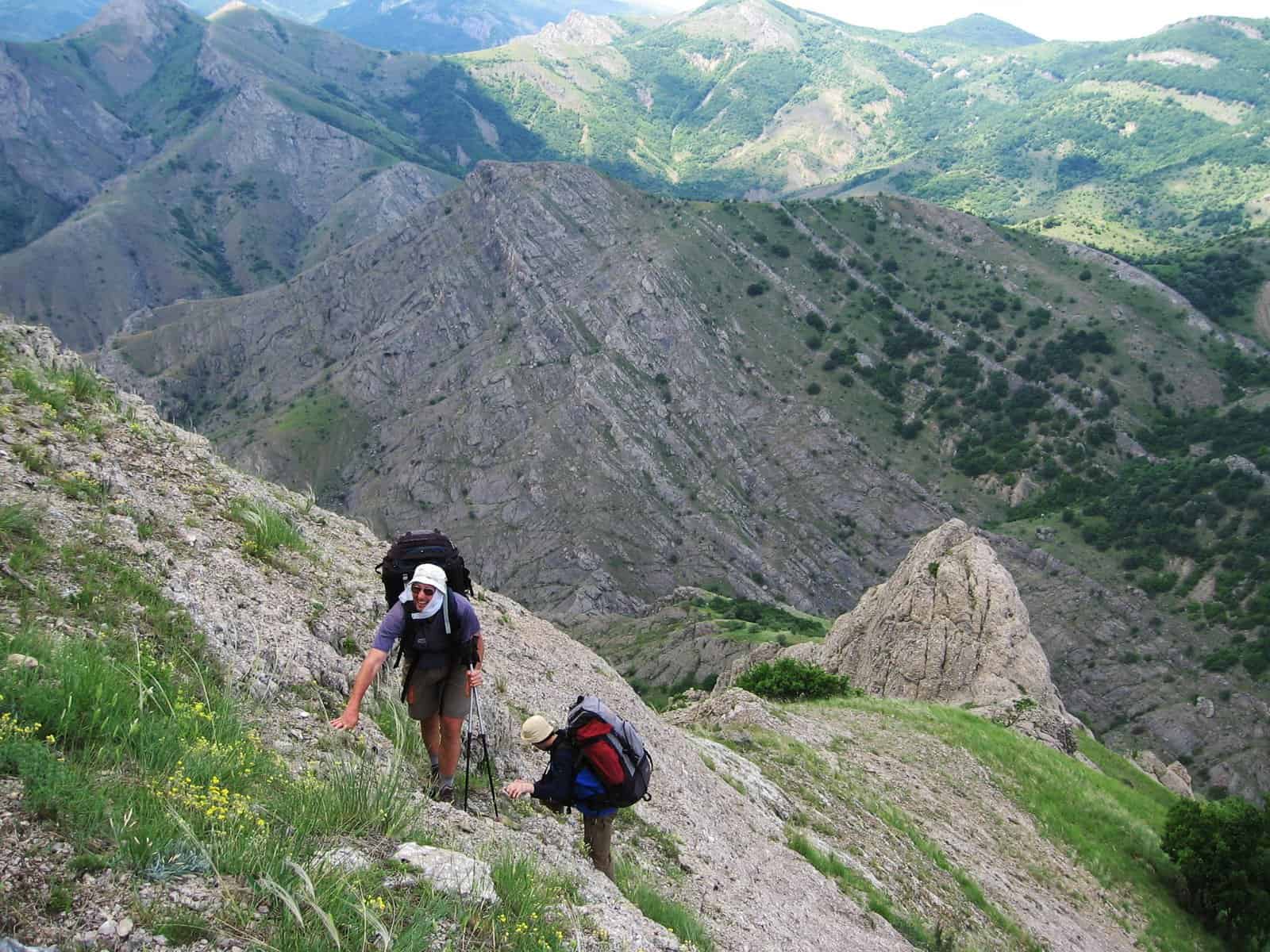
Mountain climbing, or mountaineering, can be an extreme sport. Think Mount Everest, Annapurna or any of the other big names. It can also be a fun hike if you take on small mountains that are really a hill disguised as a mountain.
Since conditions vary so vastly from mountain to mountain and season to season, the fitness required to peak or climb these mountains would also vary greatly. To climb mountains in the Himalayas such as Everest efficiently, you must be physically fit to run several marathons on back-to-back days without hesitation. On top of that you need experience in altitude training.
In this article, I will explore required fitness for mountain expedition of varying degrees of difficulty and also some of the recommended training you can do in preparation for your next adventure. I will also share what has worked for me and what hasn’t.
Contents
Defining Fitness For Mountaineering
How do we define fitness with reference to mountaineering? First, there’s the altitude. Let’s break it up into sections: low (500 – 2000m), moderate (2000 – 3000m), high (3000 – 5500m) and extreme (above 5500m) altitude climbing.
Each of these have specific challenges related to them, regardless of how technical the climb itself is. The higher the altitude, the greater the negative effect on your physical and mental abilities and your ability to maintain good health.
On top of this, you get the terrain. This ranges from be fairly easy to climb, being comparable to an easy hike, to incredibly technical, requiring experience and advanced equipment to summit successfully.
As you can see, for easy climbs at low altitude, fitness would basically entail being able to walk the distance and would be limited to cardio and some muscle strength.
Doing and easy climb at high altitude would require greater fitness, but not necessarily much technical ability, although this is at times debatable, since you would probably be dealing with snow and other altitude-related hazards.
Hard climbs or technical routes would require greater physical fitness paired with technical skills.
Added to this, you need grit to push through when the going gets tough.
This mental fitness is vital if you want to summit successfully and enjoy the adventure, especially on tougher mountains.
For simplicity then, let’s define fitness as comprising of three components:
- Physical fitness,
- Technical skills
- Mental capacity
Physical fitness would refer to the cardio and muscle fitness needed to summit a mountain, while technical skills would refer to the ability to use specific equipment on difficult routes.
Mental capacity refers to the ability to motivate and push yourself past the hardship involved.
How Fit You Need to Be To Climb Everest
Tougher mountains require greater fitness, skills and mental grit. I’m stating the obvious, but it’s really important.
You should be fit enough and strong enough mentally that running an ultra marathon should be considered doable.
Now I’m not saying you must run an ultra before climbing Everest, but you should be in that mindset.
If your fitness and technical skills aren’t up to scratch, you will have a really hard time trying to summit an advanced mountain and you could even place yourself in mortal danger in the process.
The same goes for mental grit. If your mind isn’t in it, you could make catastrophic mistakes on your way, endangering yourself and your crew.
Advanced mountaineering entails tough terrain and high altitudes, sometimes separately, but usually combined.
You will require a high level of physical fitness, technical skills and definitely mental grit.
In order to successfully take on an advanced peak such as Everest, you need to start small and well in advance. Take on smaller, easier climbs and work your way up. If you’ve never done mountaineering before, I suggest taking on a small peak that you can reach on a day hike. Make sure the terrain is easy. Next, take on something bigger, like a multi-day climb on easy terrain. Gradually increase the length, elevation and technicality of your routes with each expedition until you’re ready for the big one you’ve got your eyes on.
If you build your fitness and abilities in this way, your body will acclimatize to the type of exercise, building the right muscles and training them to work together in the correct way.
Entry Level Fitness For Mountaineering
If you already lead a fairly active lifestyle and go outdoors often (I don’t mean the backyard, I mean hiking, trail running or mountain biking etc.), you probably already have what it takes to climb an easy, low altitude mountain.
For tougher mountains and longer treks, you will need a considerable amount of preparation, both physically and mentally.
The weight you carry with you would affect the level of fitness required for a specific climb. When going for a day hike, you only need a small backpack with food, water, very basic first aid and a warm jacket. This is lightweight and won’t affect your trek much.
On the other hand, if you’re taking on a longer climb that requires you to camp out overnight, you will need a larger pack with much more provisions.
Even with careful planning and packing, this is potentially rather heavy, so you will need to be fitter for this in comparison with a light day hike.
The length of the trip also affects your long-term fatigue. Two consecutive days of climbing is a lot harder on your body than two non-consecutive day hikes on the same route.
Here, you will need stamina and a bit of mental grit to push through, especially if you underestimated your level of fitness before starting out.
For entry level climbs, you won’t need technical skills.
It is important that your body be acclimatized to the type of exercise that you would do while climbing a mountain. In order to condition yourself for mountaineering, you need to train.
Factors Other Than Fitness
High altitude brings a whole new dimension to climbing. Here, your physical and mental abilities will be negatively affected. The thinner air at higher altitudes cause you to tire quicker and befuddles your brain.
You also run the risk of altitude-related illnesses, regardless of how fit and healthy you are otherwise. Altitude sickness has no favorites and shows no mercy.
In order to give your body the best shot at success, you need to acclimatize for climbs at high altitudes. The mantra goes, “climb high, sleep low”, so climb to a higher elevation during the day and return to camp at a slightly lower altitude.
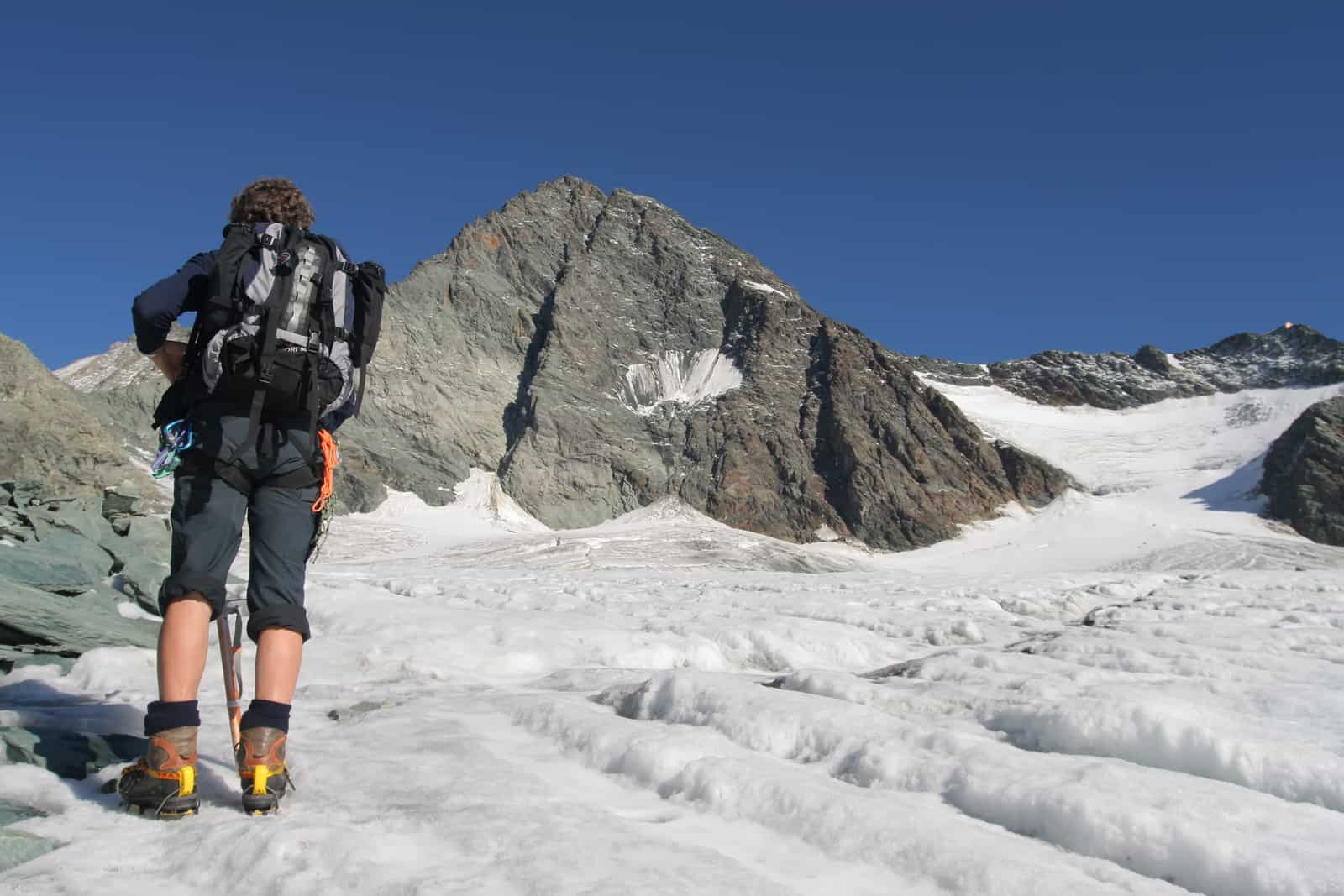
Mountain Climbing Training
The best route to follow when training for mountain climbing is to vary your workout. You will need all your muscles to work together, not just your legs.
Varying your workout teaches your muscles to work in different ways and builds your strength and stamina for holistic fitness.
A common mistake I see Is buff ‘’gym people’’ thinking that ‘’just’’ climbing or hiking would be an easy feat since they can push and pull all the heavy weights in their gym.
I made this mistake myself a long time ago. You will quickly notice that the endurance and stamina your body must gain to be proficient on the mountain is unlike most exercises in your common gym.
The toughest mountaineers are usually not the eye-catchers in the gym.
Cardio & Stamina
Cardio is very important. Walking up a mountain, even on an easy route, requires lots of walking, often at a fast pace for long stretches at a time. Preparing your lungs for this kind of strain will make your life so much easier.
In order to last the entire day (or week), you need stamina. Here, you would couple cardio with aerobic and anaerobic endurance training. This will prepare your muscles to push the last few hours you need, even when they’re burning with fatigue.
I Incorporate both continuous movement and high intensity interval training in my workout to get the most out of my preparation time.
Also combine your cardio with something like stair climbing or hiking in steep terrain. Since climbing mountains entail going up (again, stating the obvious), you want your body to be prepared for this in both endurance and strength.
Strength Training
Obviously, when hiking, your legs will bear the brunt of the work, so preparing them properly is key. I’d recommend starting out with some squats, calf raises, leg raises and lunges.
Total body workouts are a great way to prepare your muscles to work together when navigating changing terrain. Also do endurance training – lighter weights with many reps. Avoid heavy lifting although variation is key.
When mountain climbing, you will not only lug yourself up the mountain, but also a pack. You need to be prepared for this extra weight.
Once you’re comfortable with bodyweight training, add some weights to prepare for the added pressure of carrying a heavy pack.
Bear in mind that you don’t need to be able to bench press a ton, but you do need to be able to move vertically with a heavy weight on your back. Adjust your training to balance strength and endurance.
Core Training
Another vital part of training is your core. While out mountaineering, there will be a lot of pressure on your body. Core strength helps you keep everything aligned properly, relieving pressure on your muscles and joints.
This means that you’re less likely to be injured while out in the mountains, which is definitely a win.
Get Outside
To state the obvious, mountain climbing requires you to get outdoors. You won’t prepare yourself fully if you only train in the gym.
Before taking on a mountain, get outside, do a hike in the woods or park and breathe some fresh air. This will give you a feel for changing terrain, let you practice your mental grit as you tackle steep inclines or tricky downhills.
Take a pack with you that’s around the same weight as the one you plan to take on your mountaineering expedition, as this will help condition your body to the weight you will carry and help you figure out the most comfortable way to carry your pack.
Train With Your Mountain Gear
Also, train while wearing the gear you’re likely to take with you. Properly breaking in your hiking boots before a long trip will minimize blisters and help you be as comfortable as you can be.
Getting to know your gear makes it an extension of you rather than a tool in your hand. This is great when faced with tough situations on a mountain.
To vary things a bit, you could also do trail running, mountain biking, swimming or skiing (lucky fish). You still get to be outdoors and the activity would possibly take less time than an actual day hike.
Altitude Training
As you go higher, the air gets thinner and your performance gets worse. The best way to prepare for the effects of altitude, is to train in elevated locations.
If you’re planning on taking on a trek at extreme altitude, it’s advisable to train at high altitude, at least. Training at low or moderate altitudes won’t help you much in this regard, unfortunately.
Teach your body to use oxygen more efficiently through stamina training. This will increase your performance at higher altitudes where there’s less oxygen available.
Technical Training for Big Mountains
Training for highly technical routes would vary according to the skills you need to master. It’s advisable to be in a safe environment when testing out new gear.
You don’t want to figure out your new harness and grigri for the first time while you’re rappelling down a sheer cliff. Make sure that you understand your equipment and that you’re comfortable using it before heading for the mountains.
It’s also a good idea to learn and master new techniques on easier climbs while in the company of someone who has lots of experience in using it.
Pick your climbs such that you learn and master one new skill per expedition, making the learning curve less steep and giving you peace of mind that you actually know what you’re doing.
Learning to use lots of new gear all at once could leave you flustered and make you feel unsafe while in a potentially dangerous situation. This is not ideal and bad experiences like this could put climbers off the sport for good.
Mental Training
Mental training is different to physical conditioning and I can from my own experience say that It can certainly be the most challenging aspects of mountaineering.
I also believe that it is an aspects that you will never fully master, however many times you have climbed.
Here, it helps to know the route that you will take up the mountain – not just seeing it on a map. You need to understand the inclines and elevation, how steep and long each incline and downhill is and what the terrain looks like.
Understand and prepare for the weather conditions that you’re likely to encounter too. Make sure that you choose an easier route with a shorter distance and fewer inclines to start off until you are better prepared to take on tougher routes.
Mind over matter is an apt description of what it takes to get to the top of almost every mountain. If you view the entire mountain as a single obstacle to conquer, you will most likely be too intimidated to continue. Break it up into smaller sections and celebrate conquering each of those.
The more advanced the mountain, the smaller those sections will be. On a mountain like Everest, you would literally focus on just taking the next step, because the conditions are that tough.
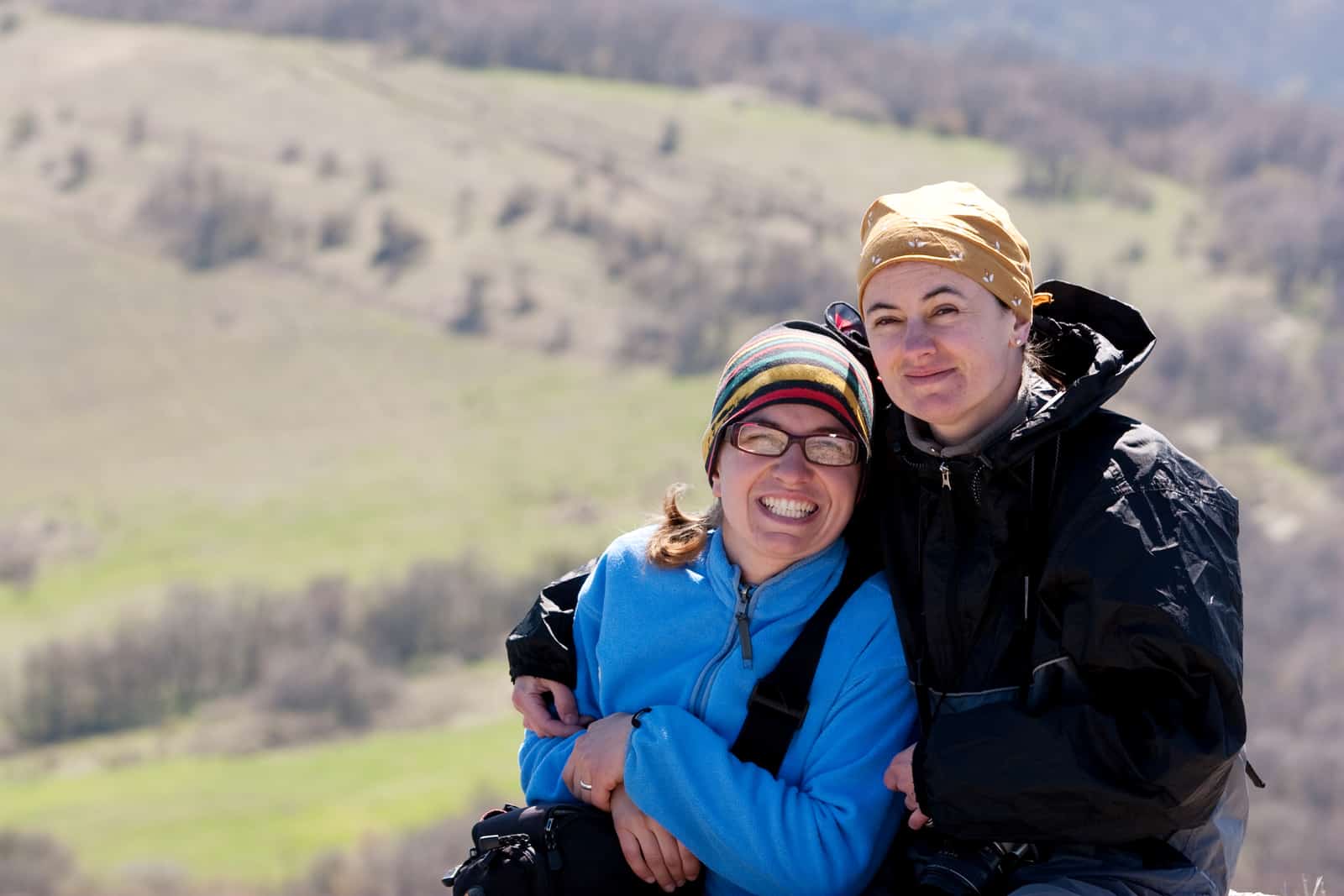
Judging Your Level of Fitness for Mountaineering
Different mountains require different levels of physical and mental fitness. In order to your readiness for a specific mountain, you need to know what the mountain is likely to through at you.
Study the route that you will take, taking time to understand the topography and terrain. Think back on recent routes that you’ve done, preparing these to the one you’re studying.
If you handled a specific route easily, taking on one that is a little bit tougher should easily be within reach.
If you struggled with a specific trek, it’s probably not a good idea to take on something that is even tougher just yet. Take on a few easier routes and maybe adjust your training regime to address your weaknesses.
The key here is to be honest with yourself about your current capabilities and limitations. Don’t let pride make you overreach your abilities.
Conclusion
The level of fitness needed depends on the mountain you’re planning to take on. It’s important that you assess your current capabilities honestly and accurately. Take this into account when planning your training regime for the mountain you want to take on.
Finally, you will never be ‘’finished’’ training for mountaineering. Everybody can always improve. Mountaineering is only a way of challenging ourselves, learning and evolving. Remember this, enjoy the road and not the destination. Happy adventures!
Written by Felix

About me
Hi! I’m Felix. When I’m not spending time out in the mountains, I like to write about my hobbies. That is how Mountain Homies was created. On this site, I try to gather all the juicy information about Mountaineering that I have learned since I started. Happy adventures!
Related Articles
3 Ways to Spot and Reveal a Crevasse (And Avoid It)
So, how do you spot a crevasse and – more importantly – avoid falling into one? In this article, I will have a look at what crevasses are and how to detect them…
5 Ways of Knowing If Your Climbing Shoes Are Too Big
It has almost become a prestige among climbers to be able to boast about how small and tight climbing shoes can be used. There is therefore a lot of talk…
3 Clever Ways of Crossing A Crevasse
When you’re mountaineering in snow country, you will undoubtedly encounter some crevasses. These are scary, since you don’t always spot them…
Stay Up to Date With The Latest News & Updates
Join Our Newsletter
The owner of this site is a participant in the Amazon Services LLC Associates Program, an affiliate advertising program designed to provide a means for sites to earn advertising fees by advertising and linking to amazon.com.

